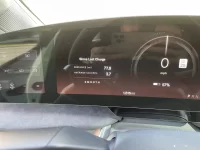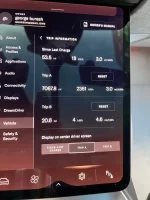- Joined
- Jan 14, 2022
- Messages
- 3,112
- Reaction score
- 2,345
- Location
- Scottsdale Arizona
- Cars
- Genesis GV60 Performance
It should hust be simple, but either way, is there another EV out there than can do 240 miles at 80mph on 64% SOC in 100 degree weather? Lucid is the range king
Absolutely. I never expected the Lucid as one would drive a $100+K car to meet the EPA numbers. But I never expected any of the other car makers BEVs to meet their number either. I have been monitoring the results that fellow members here have been posting. My off the cuff approach is to reduce the full range by 20% (for the 20-80% preferred charge) and then take another 25% off to account for driving style, weather, terrain, etc. But the number still beat everyone else.


